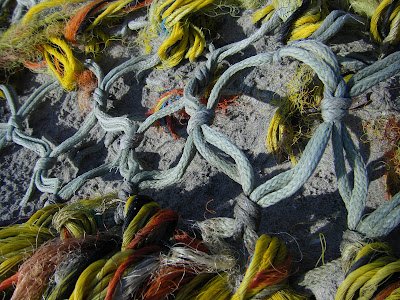Folly Creek is close to the courthouse town of Accomac and has had an active history, but now things are relatively quiet. On either side of the shoreline are historic homes, woodlands, farms and marshes. Over 1700 acres of land surrounding the creek have been placed in some form of conservation easement, hopefully ensuring that the environmental quality and the views will remain relatively unchanged.



 One of the houses on the north side of the creek is Bowman's Folly. The "new" house was built in 1816 by John Cropper who served under George Washington during the Revolutionary War. During the War of 1812 he was appointed a Brigadier General, which might be why the British came up the creek and burned down the old Bowman's Folly. Before Cropper began rebuilding, he had his slaves haul up tons of earth from the shore to form a mound, raising the elevation of the house. This not only kept it above flooding storm tides, but gave it a more prominent place near the mouth of the creek.
One of the houses on the north side of the creek is Bowman's Folly. The "new" house was built in 1816 by John Cropper who served under George Washington during the Revolutionary War. During the War of 1812 he was appointed a Brigadier General, which might be why the British came up the creek and burned down the old Bowman's Folly. Before Cropper began rebuilding, he had his slaves haul up tons of earth from the shore to form a mound, raising the elevation of the house. This not only kept it above flooding storm tides, but gave it a more prominent place near the mouth of the creek. 
 After our channel marking duties were complete, we got to go clamming, which is also best done at low tide. Dad took us to a spot at the southern end of the bay, with clean firm sand where he has had good luck in the past finding clams. If you have never had the pleasure of clamming, it is fairly easy. Sometimes you can use your bare feet to find them, but we used clamming rakes, which are like garden rakes, only with longer tines and with a small wire frame on the back. All you do is pull the rake through the sand until you hit a clam, making your rake "sing". A little effort pulls the clam to the surface.
After our channel marking duties were complete, we got to go clamming, which is also best done at low tide. Dad took us to a spot at the southern end of the bay, with clean firm sand where he has had good luck in the past finding clams. If you have never had the pleasure of clamming, it is fairly easy. Sometimes you can use your bare feet to find them, but we used clamming rakes, which are like garden rakes, only with longer tines and with a small wire frame on the back. All you do is pull the rake through the sand until you hit a clam, making your rake "sing". A little effort pulls the clam to the surface.

For most of its history, change has come gradually to the Eastern Shore, but the modern world exerts great pressures, and changes on land impact marine life. While it can't or shouldn't be frozen in time, I applaud any effort that aims at the preservation of its history, culture and especially the quality of its land and waters. Recently the current owners of Bowman's Folly added their 601 acres to the conservation easement, so at least part of this special place (and maybe some clams) will be around for others to enjoy.










 ... and at nearby Maury High School.
... and at nearby Maury High School.














.JPG)































